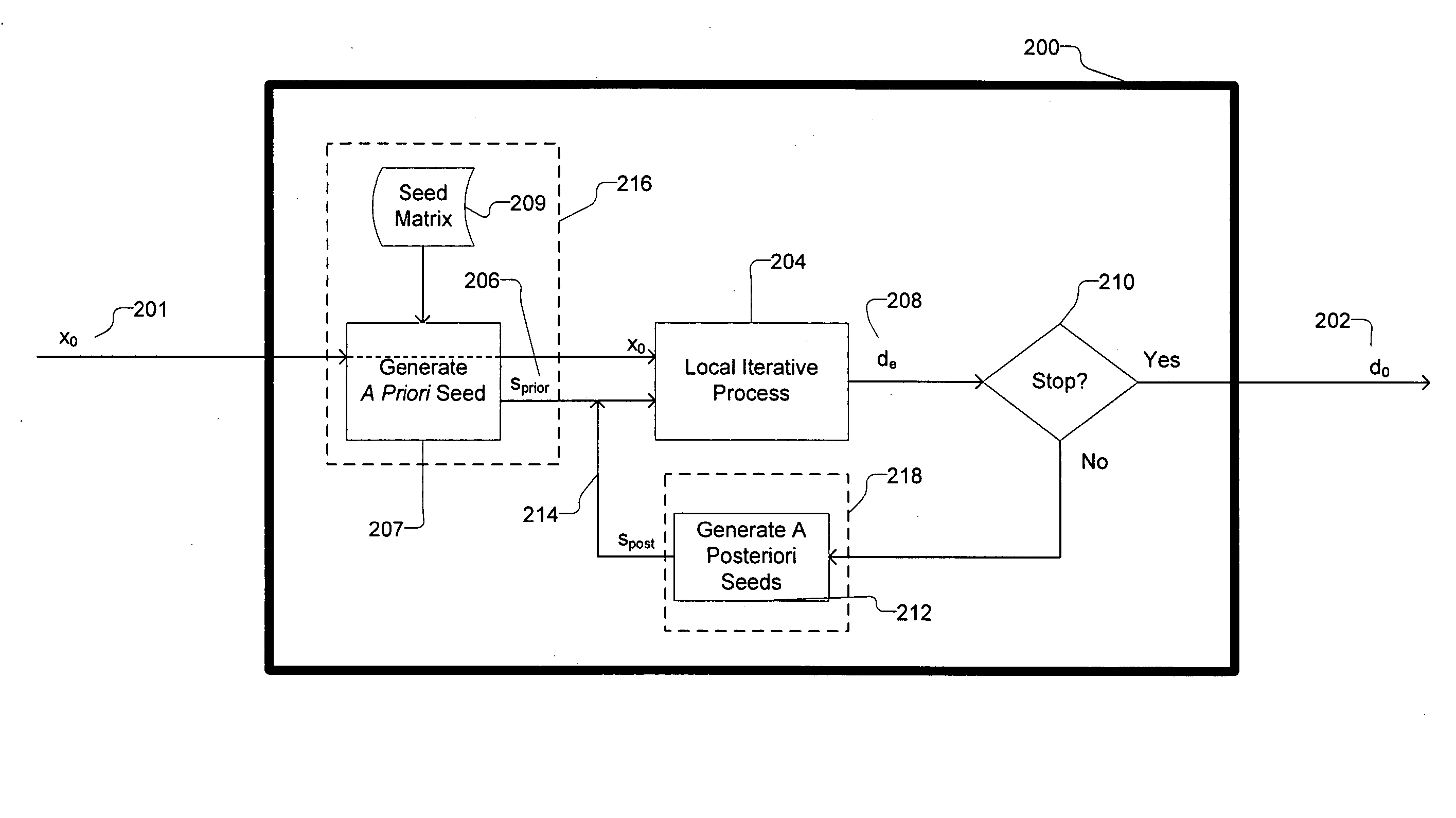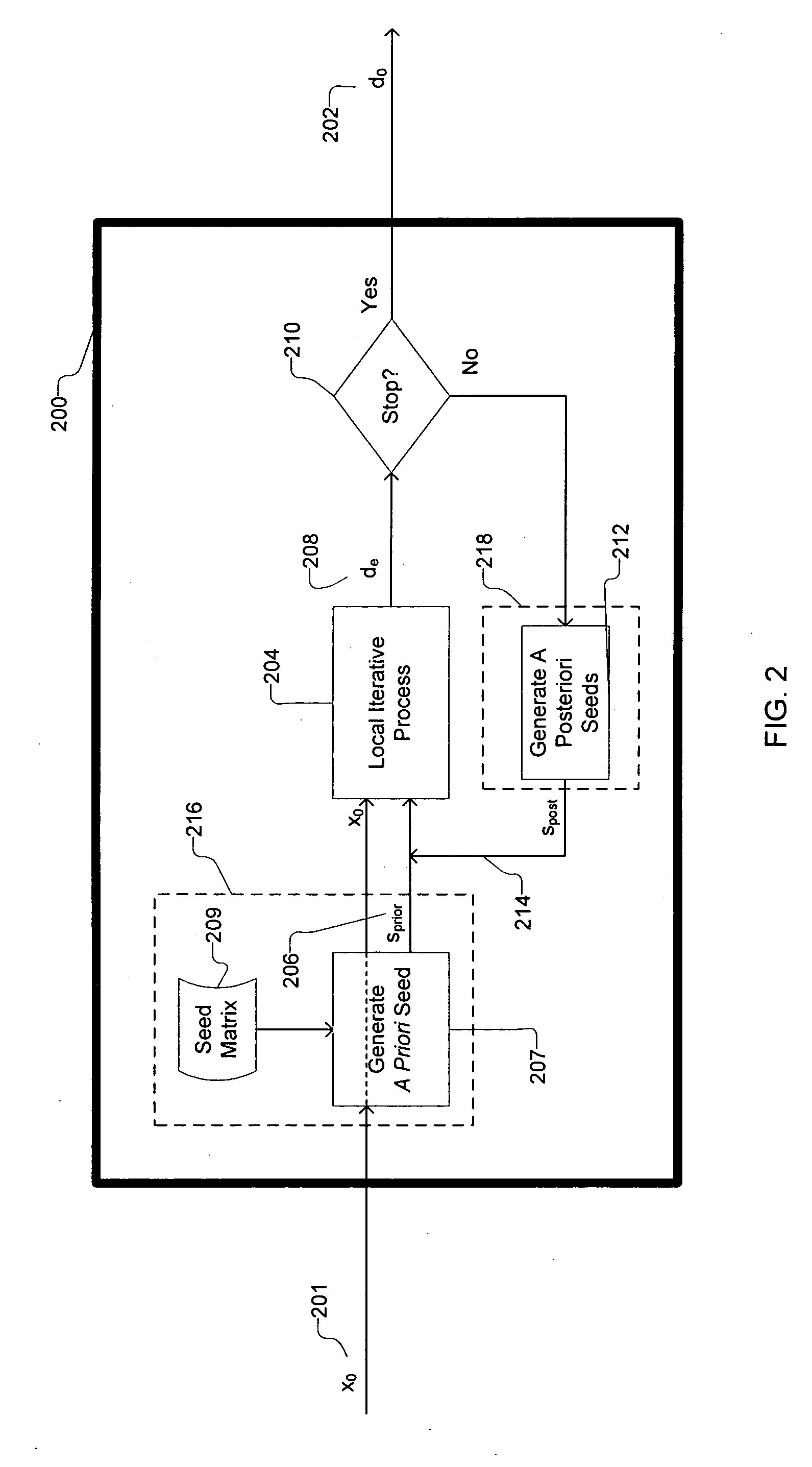Inversion of color device models
- Summary
- Abstract
- Description
- Claims
- Application Information
AI Technical Summary
Benefits of technology
Problems solved by technology
Method used
Image
Examples
Embodiment Construction
[0028]FIG. 1 is a block diagram of generating an output color display or printout using an inverted color device model in accordance with an exemplary embodiment of the present invention. A document 100 including a color image 102 may be displayed (108) on a color output device such as a color monitor 106 or printed (112) on a color output device such as a color printer 110 by a data processing apparatus 112 such as a computer. As each type of color device operates using different physical principles, each type of color output device has its own operating characteristics. In order to cope with a plurality of color output devices having different operating characteristics, color documents include color values specified in a standardized perceptual color space. A Color Management System (CMS) 114 is employed by the data processing apparatus 112 to generate the appropriate outputs for driving the color devices in their own device color spaces.
[0029] The CMS 114 of FIG. 1 utilizes a co...
PUM
 Login to View More
Login to View More Abstract
Description
Claims
Application Information
 Login to View More
Login to View More - R&D
- Intellectual Property
- Life Sciences
- Materials
- Tech Scout
- Unparalleled Data Quality
- Higher Quality Content
- 60% Fewer Hallucinations
Browse by: Latest US Patents, China's latest patents, Technical Efficacy Thesaurus, Application Domain, Technology Topic, Popular Technical Reports.
© 2025 PatSnap. All rights reserved.Legal|Privacy policy|Modern Slavery Act Transparency Statement|Sitemap|About US| Contact US: help@patsnap.com



